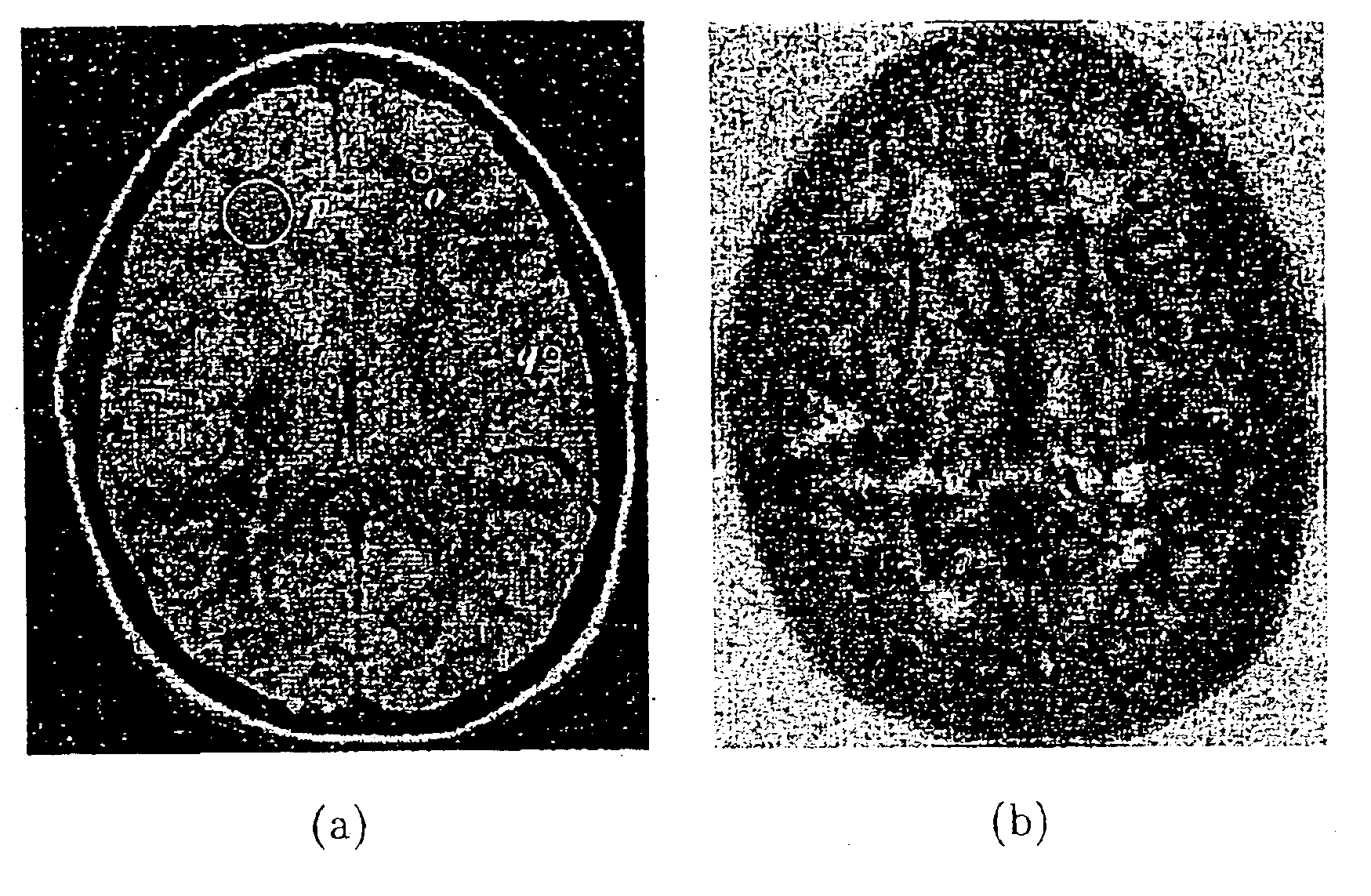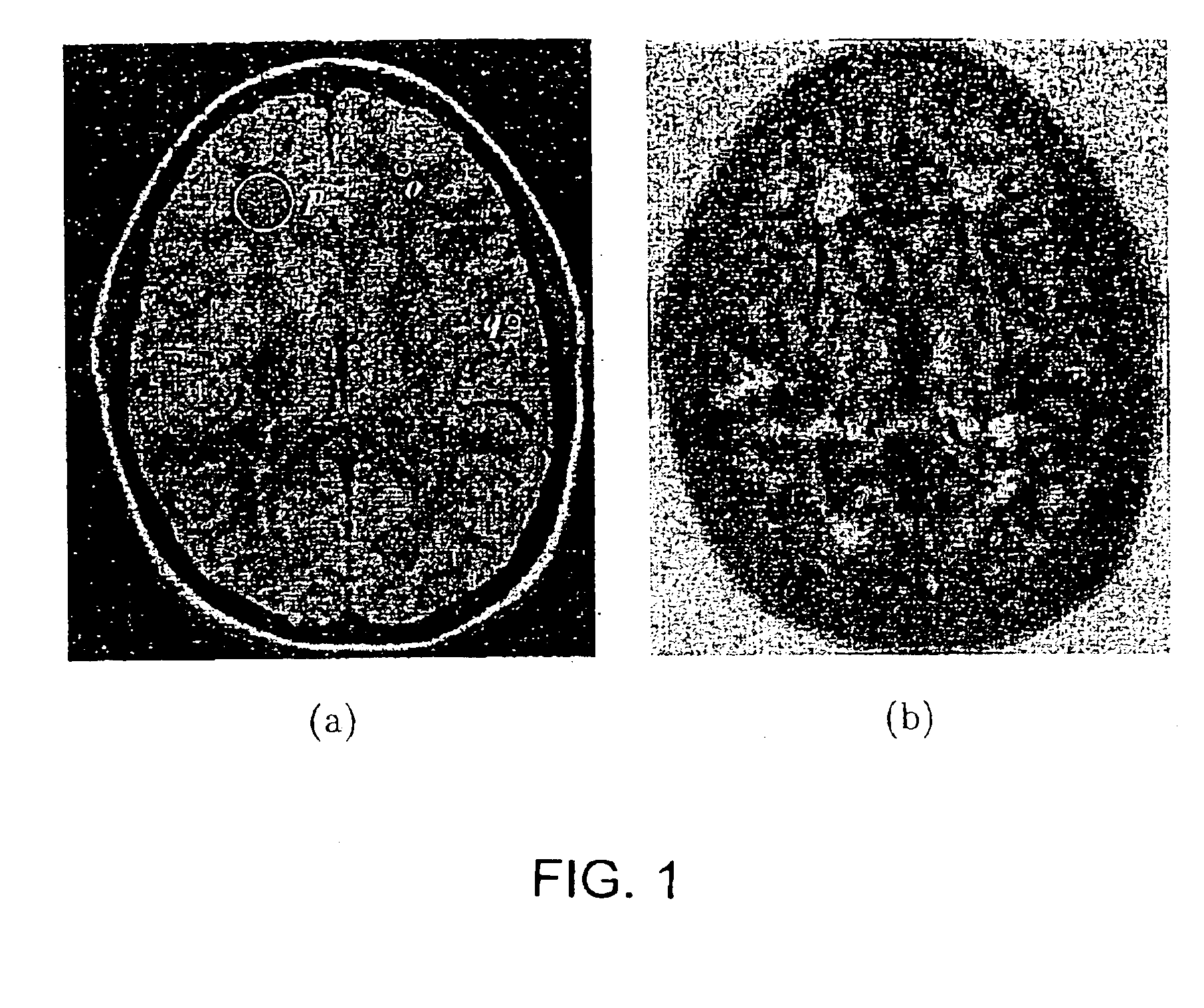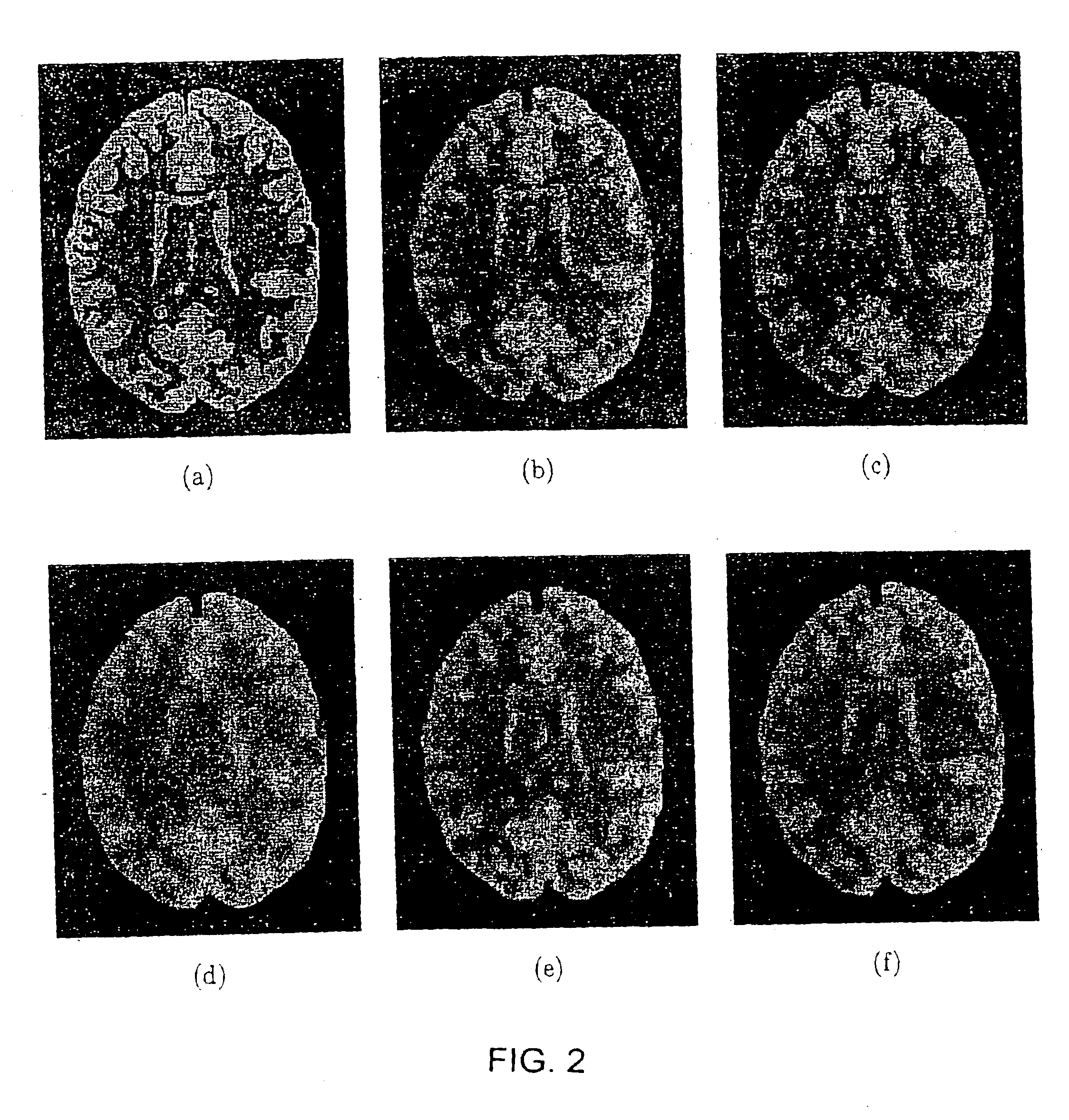Scale-based image filtering of magnetic resonance data
a magnetic resonance data and image filtering technology, applied in image enhancement, instruments, applications, etc., can solve the problems of low signal-to-noise ratio (snr) and/or contrast-to-noise ratio (cnr), image acquisition techniques often suffer from low snr and cnr, and degrade the information contained in images and their utility, etc., to achieve enhanced real-time images
- Summary
- Abstract
- Description
- Claims
- Application Information
AI Technical Summary
Benefits of technology
Problems solved by technology
Method used
Image
Examples
example 1
Qualitative Comparisons.
[0089]In this example, two case studies are presented from MR patient studies, and then two phantom experiments are described.
[0090]Comparative Case Study 1.1.
[0091]In FIG. 4, the filtered output from the three methods is illustrated for two regions of interest (ROI)—one from the top-left corner and the other from the bottom-right corner—selected from the MR slice displayed in FIG. 1(a). The two ROIs, and the results from the three filtering methods, are shown in FIGS. 4(a)-4(h). FIGS. 4(c)-4(h) depict filtered scenes (in 2D) corresponding to the scenes in FIGS. 4(a) and 4(b) resulting from anisotropic diffusion (shown in FIGS. 4(c) and 4(d)), from scale-based neighborhood averaging (shown in FIGS. 4(e) and 4(f)), and from scale-based diffusion (shown in FIGS. 4(g) and 4(h)). As can be seen from all six filtered images (FIGS. 4(c)-4(h)), the smoothness in homogeneous regions seems visually to be the same in all images, while boundary contrast seems to be high...
example 2
Quantitative Comparisons.
[0108]The quantitative comparison utilized the scenes depicted in FIGS. 6 and 7. Let Cb=(C, ƒb) denote the original binary phantom scene (before adding artifacts), and let E={Ci|Ci=(C, ƒi), 1≦i≦25} denote the set of 25 phantom scenes generated from Cb, as described in Example 1, Phantom Example 1.2. Let let Exi={Cxi|Cxi=(C, 71xi), 1≦i≦25} denot the set of scenes produced by applying the filtering method xε{ad, sa, sd} to the scenes in E, where ad, sa, sd correspond to anisotropic diffusion, scale-based neighborhood averaging and scale-based diffusion, respectively. Over the scene domain C, 100 ROIs, CHi, 1≦i≦100 were randomly selected, each of size 18×18, from homogeneous regions, such that all the pixels in a ROI had the same intensity (object or background) in the initial phantom scene Cb. Of the 100 ROIs, 60 were from background regions, and 40 were from object regions. Additionally, 50 ROIs, CSi, 1≦i≦50, were selected from regions containing boundaries. ...
PUM
 Login to View More
Login to View More Abstract
Description
Claims
Application Information
 Login to View More
Login to View More - R&D
- Intellectual Property
- Life Sciences
- Materials
- Tech Scout
- Unparalleled Data Quality
- Higher Quality Content
- 60% Fewer Hallucinations
Browse by: Latest US Patents, China's latest patents, Technical Efficacy Thesaurus, Application Domain, Technology Topic, Popular Technical Reports.
© 2025 PatSnap. All rights reserved.Legal|Privacy policy|Modern Slavery Act Transparency Statement|Sitemap|About US| Contact US: help@patsnap.com



